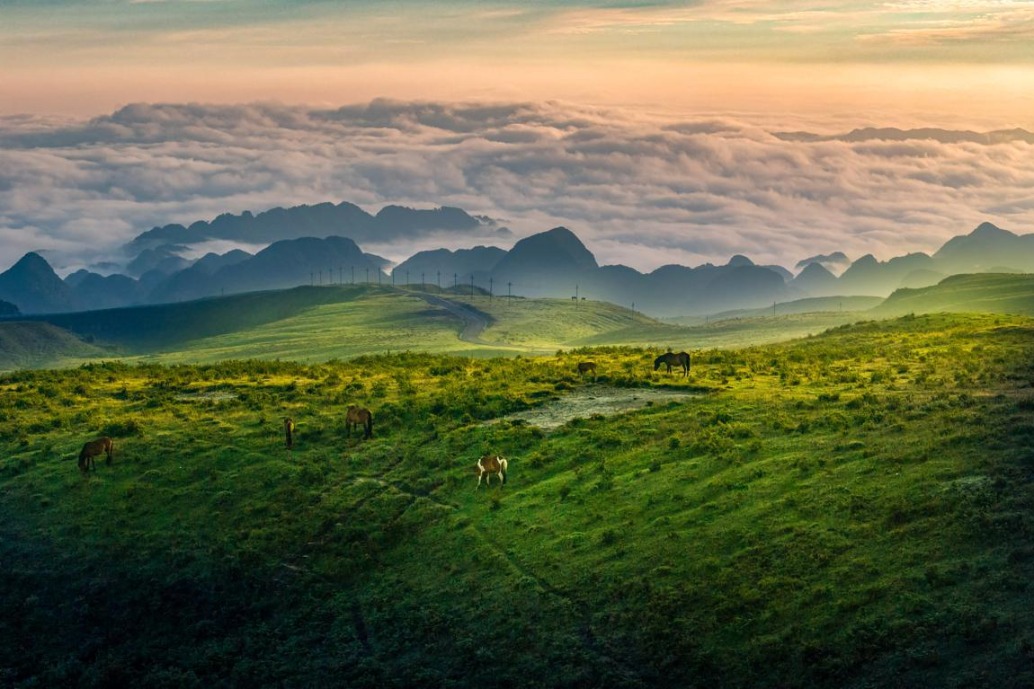Turning the tide on mangrove deforestation


Zhimin Wu, Director, Forestry Division, Food and Agriculture Organization of the United Nations
Over the past 40 years, over 20 percent of mangroves globally were lost due to both human activities and natural retraction.
But climate change has made humanity to re-evaluate its natural resources, and mangroves are now increasingly understood to be far more valuable when standing. They not only protect coastlines, contribute to food security, are among the world's most carbon-rich forests, and are one of our most extraordinary ecosystems.
It takes time, concerted global effort and resources to change human habits and encourage sustainable approaches. But a new report from the Food and Agriculture Organization of the United Nations (FAO) shows that governments and coastal communities around the world are now moving increasingly fast towards ending the deforestation of mangroves.
Between the first and the second decades of this century, the rate at which mangroves were lost fell by almost a quarter (23 percent), according to the study.
Asia, which hosts almost half the world's mangroves, now accounts for 54 percent of all mangrove loss, down from 68 percent in just ten years.
In the same period, aquaculture (typically primarily pond shrimp aquaculture), one of the main causes of mangrove loss, went from causing 31 percent of all loss to 21 percent.
These are extraordinary achievements worth celebrating today, which is the International Day for the Conservation of the Mangrove Ecosystem.
But this is not the only good news.
While humans have been reducing their impact, the study reveals that mangroves, unlike other forests, can spread very fast given the chance.
Over the 20-year period studied, 677,000 hectares of mangroves were lost, but more than half that amount – 393,000 hectares, or an area equivalent to 550,000 football pitches - of new mangroves were established, meaning a net loss of 284,000 hectares over this period. Some 82 percent of the new mangroves grew naturally.
Nevertheless, just as we are seeing real progress on mangroves, climate change is taking an increasing toll.
Natural retraction is the second most important cause of mangrove loss (26 percent of the total loss over the 20-year period) and is at least partially linked to climate change. Climate change can affect mangroves through rising sea levels, increases in atmospheric carbon dioxide, rising temperatures, changes in rainfall and extreme weather.
FAO's study also reveals that natural disasters accounted for only 2 percent of all loss over the 20-year period. However, this still amounted to a threefold increase, and damage to mangroves from natural disasters is expected to worsen.
This means we must redouble efforts and investment in coming years.
These extraordinary forests may only cover 14.8 million hectares worldwide, but on the coastlines of the 123 countries where they occur, mangroves really matter.
When disaster strikes, like storms, tidal waves, floods and tsunamis, mangroves can literally hold back the surging sea, absorbing much of the impact. Areas with mangroves were significantly less damaged in the 2004 Indian Ocean tsunami than areas without.
Mangroves also support coastal communities by providing a rich source of food and income. Managed sustainably, mangroves can provide fish, molluscs, crustaceans and material such as woodfuel, timber, honey, medicines and animal fodder for generations to come.
FAO works with coastal communities to promote these vital benefits, boosting livelihoods while protecting mangroves. For example, in Costa Rica FAO has provided training to women who formed a cooperative, protecting mangroves while also making a profit from selling shellfish and taking orders on social media apps.
Turning the tide on the deforestation of mangroves involves raising awareness – at global, national and local community levels– that they are part of a country's forest assets.
It involves integrating mangroves coherently into national policies and developing plans, strategies and skills on the ground for sustainably using and managing them.
We must harness the momentum gained, learn lessons and share knowledge from successful strategies to continue to reduce the human pressure on this unique and precious natural resource.
- Foreign experts, journalists explore China's cultural heritage
- Jiangxi county pioneers innovative rural development approach
- China's 'medicine capital' company goes fully automated
- Beijing prosecutors helping errant minors to get back on track
- Copyright Society of China wins approval to be observer of world intellectual property body
- China sets sights on greener, smarter, and more globally connected maritime future






































